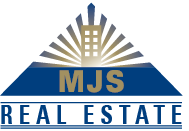In my blog dated March 29, I promised to reveal concrete examples that illustrate how landlords have been able to cheat tenants over several years by deliberately using false measurements of rental areas. Here is a real life example among many others that illustrates the facts alleged in my three previous blogs.
Case #1 – More than just a detail for retail.
A tenant operates large retail businesses in five regional retail centers in Quebec and Ontario, all of them owned by the same landlord. The tenant is considered an anchor tenant. The tenant’s standard lease clearly states that the total leasable area of the shopping center (TLAC), in determining the tenant’s proportionate share, must at all times represent the leasable area of all the buildings built on the site.
When asked to justify the TLACs for each of the centers, the landlord produced an extract from the rent roll of each location. The registers contain the leasable area attributable to each of the premises and the sum of these areas gives the TLAC of each of the shopping centers.
In this example, I have found evidence that the landlord has always calculated the TLAC by considering only the occupied premises, thus excluding the vacant spaces from the TLAC calculation. In doing so, the landlord unfairly inflated the tenant’s proportionate share. He has even added insult to injury by repeatedly lying to the tenant and to myself that this was not the case. In addition, the area of some of the other tenants’ premises (and by extension the TLAC) had been underestimated by the lessor. Here is how the scam was discovered.
- On the rent roll registers, the area of some premises had been time-weighted over less than 365 days, although these premises had existed for several years. This created a serious doubt that the lessor’s weighting was not based on the existence of the premises (otherwise it would have been 365/365) but on another duration, such as the duration of occupation of the premises during a fiscal year;
- I physically corroborated the existence and approximate area of each of the premises when visiting each of the shopping centers. The vacant premises did not appear on landlord’s rent rolls;
- In the review of the insurance invoices charged to the operating expenses of the shopping centers, I found out that some of these invoices represented premium adjustments related to the addition of new rental space. The area of these premises as well as the construction end date appeared on the invoices. I also noticed that the dates of commissioning of these new premises on the landlord’s rent roll were always later (and sometimes much later) than the dates confirmed by the insurance bills. In addition, the areas of the premises indicated on the insurance invoices were often larger than those appearing in the rent roll;
- Using the Google Earth app, you can get aerial shots of buildings at different dates. By comparing the images, I was in a position to see the addition of buildings and to be able to delimit a period of time during which the building was built;
- The landlord did not want to produce the certificate of measurement for a new large building added to one of the sites in a specific year. This one-story building was entirely occupied by the LCBO. By looking at the building, the area declared on the rent roll seemed to be underestimated by the lessor. With the help of Google Earth measuring tools and its scale, it was possible to calculate the perimeter of the building and thus estimate the leasable area. During the audit of the same shopping center two years later, I finally got hold of the measurement certificate. The certificate confirmed an actual leasable area ranging from less than 2% of my estimated Google Earth area done two years before. The landlord had refused to produce the certificate during the previous audit because it was dated March 15 (construction completion date of the building) while he swore body and soul that the building had been completed around November 15 of the same year.
The most incredible thing is that despite the fact that the landlord’s manipulation was discovered several years ago, this one reproduces the same ploy year after year, even if he knows very well that he will be the object of a lease audit for each of his fiscal years. These five shopping centers have been audited each year since 2009 and the landlord’s handling of the TLACs resulted in a rent overpayment of several hundreds of thousand dollars, which were of course recovered by the client.
Areas manipulations by Landlords – What a shame!
In my next blog, which will be broadcasted in a few days, I will disclose a second real life case of ploy carried out by the lessors to overcharge rents to commercial buildings tenants. All tenants of office, industrial or retail space should use the services of a lease auditor to ensure that they are not victims of such shameful acts!



